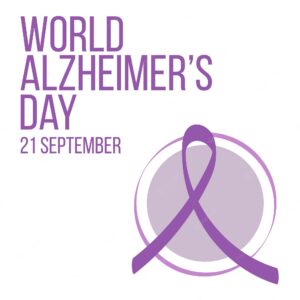
Hysteria, derived from the Greek word “hystera” meaning uterus, has a long and complex history spanning centuries. This article delves into the origins of hysteria, its evolving understanding, and how it has been perceived and treated throughout different eras. We will explore the various theories and beliefs surrounding hysteria and shed light on its transformation from a physical ailment to a psychological condition.
Table of Contents
- Introduction
- Ancient Beliefs and the Wandering Uterus
- The Evolution of Hysteria in Ancient Greece and Rome
- The Shift to Mental and Nervous Disorders
- Hysteria and the Enlightenment Era
- Mesmerism and the Treatment of Hysteria
- The Rise of Victorian Treatments for Hysteria
- Contributions of Charcot and Freud to Hysteria
- Debunking the Myth: Vibrators and Hysteria
- Psychoanalysis and the Understanding of Hysteria
- Hysteria in the Context of World War I
- Modern Perspectives on Hysteria
- Conclusion
1. Introduction
Hysteria, a term often associated with uncontrollable emotional excess, has a rich history that dates back to ancient times. Initially considered a physical ailment associated with the uterus, the understanding of hysteria has evolved over time. This article aims to explore the origins, theories, and treatments related to hysteria, providing a comprehensive view of its historical significance.
2. Ancient Beliefs and the Wandering Uterus
The concept of hysteria can be traced back to ancient Egypt, where it was believed that the uterus, or “womb,” played a central role in women’s health. The Egyptians attributed behavioral abnormalities in women to the wandering of the uterus. To treat hysteria, doctors would use various methods, such as applying strong-smelling substances to the vulva or employing herbs to encourage the uterus to return to its proper position.
3. The Evolution of Hysteria in Ancient Greece and Rome
In ancient Greece, renowned philosophers and physicians, including Hippocrates and Plato, further developed the concept of hysteria. They believed that the uterus had the ability to wander throughout the female body, causing an array of physical and mental symptoms. However, not all ancient Greek scholars agreed on the exact nature and causes of hysteria. Some attributed it to a retention of female seed, while others saw a connection between hysteria and sexual activity.
4. The Shift to Mental and Nervous Disorders
With the dawn of the Enlightenment era, there was a gradual shift in the understanding of hysteria. Physicians like George Cheyne began to associate the disorder with the nervous system and mental functions. The term “sensibility” emerged, emphasizing the role of the brain and the nervous system in the development of hysteria. This marked a departure from the traditional focus on the uterus as the primary cause.
5. Hysteria and the Enlightenment Era
During the Enlightenment era, the concept of hysteria continued to evolve. Anton Mesmer, a prominent figure of the time, introduced the idea of “animal magnetism” as a means of treating various ailments, including hysteria. Mesmer’s methods involved the manipulation of energy flows in the body, which he believed could alleviate symptoms of hysteria. However, his techniques were later discredited.
6. Mesmerism and the Treatment of Hysteria
The mesmerism movement gained popularity in the 18th century as a supposed cure for the afflictions associated with hysteria. Practitioners believed that the transfer of energy, often through massage or transference, could alleviate symptoms. While mesmerism did not directly involve the use of vibrators, it played a role in the development of alternative treatments for hysteria.
7. The Rise of Victorian Treatments for Hysteria
The Victorian era witnessed a shift in the treatment of hysteria, with physicians like Silas Weir Mitchell advocating for the “rest cure.” This controversial treatment involved confining women to bed, restricting physical and intellectual activity, and sometimes resorting to electroshock therapy. Charlotte Perkins Gilman’s famous work, “The Yellow Wallpaper,” sheds light on the detrimental effects of the rest cure.
8. Contributions of Charcot and Freud to Hysteria
Jean-Martin Charcot and Sigmund Freud made significant contributions to the understanding and treatment of hysteria. Charcot, a renowned French neurologist, extensively studied hysteria and its various manifestations. Freud, influenced by Charcot’s work, developed psychoanalytic theories that explored the role of repressed sexual desire and trauma in the development of hysteria.
9. Debunking the Myth: Vibrators and Hysteria
One prevalent myth surrounding hysteria is the notion that doctors used vibrators to treat female patients. While vibrators were indeed developed during the Victorian era and were used for various purposes, there is no concrete evidence to support the claim that they were specifically employed to treat hysteria. This misconception stems from Rachel Maines’ controversial book, “The Technology of Orgasm.”
10. Psychoanalysis and the Understanding of Hysteria
Freud’s psychoanalytic approach revolutionized the understanding of hysteria. He posited that mental trauma and repressed desires, rather than physical causes, underpinned the development of hysterical symptoms. Freud’s emphasis on the unconscious mind and the role of sexuality in psychological disorders greatly influenced the field of psychology and laid the groundwork for modern psychotherapy.
11. Hysteria in the Context of World War I
The outbreak of World War I brought attention to the prevalence of hysteria, albeit under different names such as “war neurosis” or “shell shock.” The traumatic experiences of soldiers led to the recognition that hysteria was not limited to women and could affect individuals of all genders. This realization marked a turning point in the understanding of hysteria as a condition rooted in psychological trauma.
12. Modern Perspectives on Hysteria
In modern times, the concept of hysteria has largely been abandoned in medical practice. The symptoms once associated with hysteria are now understood as manifestations of various mental and physical disorders. Dissociative disorders, somatic symptom disorder, and other psychological conditions have replaced the broad diagnosis of hysteria, allowing for more specific and nuanced approaches to treatment.
13. Conclusion
The history of hysteria reveals the evolution of medical and societal perspectives on women’s health and mental well-being. From ancient beliefs in the wandering uterus to Freud’s psychoanalytic theories, hysteria has been a complex and controversial concept. While the understanding and treatment of hysteria have undergone significant changes over the centuries, its legacy serves as a reminder of the enduring impact of societal norms and biases on medical diagnosis and treatment.





I visited many websites however the audio quality for audio
songs current at this site is in fact excellent.
For hottest information you have to pay a visit world-wide-web and on world-wide-web I found this website as a finest website for most recent updates.
thank you